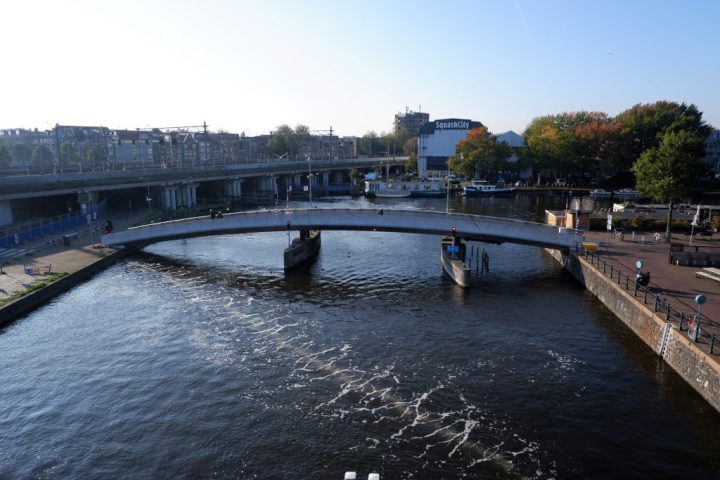A bubble barrier to contain marine plastic waste

After holding plastic collection events held during boat tours, it recently launched a simple and affordable system, in collaboration with the Regional Water Department and a start-up, comprised of a bubble barrier that traps waste and redirects it to the banks of the canals where it can then be collected. The world’s first “Great Bubble Barrier” was just recently set up at a strategic location, on the Westerdock canal located at the end of Amsterdam’s historic canal system.
A bubble barrier to combat floating waste
The bubble barrier comprises a long, perforated tube into which air is pushed. It is placed at the bottom of the waterway and is therefore not a physical obstacle for boats and fish. However, pumping air through the tube creates a curtain of bubbles which guides debris and waste from the bottom of the canal and the water’s surface towards the banks.
By placing two curtains in a diagonal pattern, the bubble barrier prevents plastic waste from floating downstream and therefore from ultimately ending up in the ocean. The waste is redirected to containers placed along the banks where it can be easily collected using conveyer belts for instance. The waste will then be analysed by the volunteers of the “Clean River” project.
The system, which is intended to redirect up to 80% of the waste towards the collection points, will operate 24/7 over the next three years. Philip Ehrhorn, co-inventor of the “Great Bubble Barrier” and co-founder of the recently-created start-up of the same name, is hopeful: “Over two thirds of the plastic waste in the oceans comes from rivers and canals. If we are going to intercept that waste, why not start there”.
Rivers without plastics
In May 2017, the bubble barrier was tested in the facilities of the Dutch Deltares research institute. A few months later, the start-up launched a three-week full-scale experiment in the IJssel river, using a 200m-long bubble barrier, which demonstrated the system’s ability to operate in all circumstances.
Great Bubble Barrier hopes to export its bubble curtains to strategic locations around the world, in particular to Asia which is home to eight of the ten rivers carrying the most plastic waste in the world. Given that over two thirds of the plastic waste in the oceans comes from rivers, placing these great bubble barriers in some of those rivers could have a huge impact on reducing marine pollution.
More information:
https://thegreatbubblebarrier.com/en/





